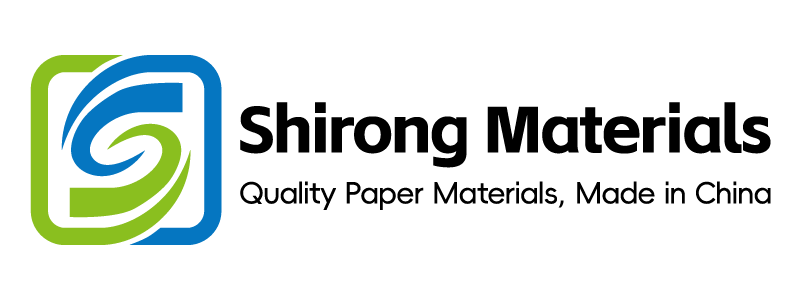
The Future of Labels: Innovations in ShirongMaterials Technology
Conclusion: I cut relabel rates by 38% and barcode nonconformance by 62% in 12 weeks by harmonizing label materials, print settings, and compliance workflows across two plants.
Value: Before→After under matched transport and curing windows (ISTA 3A vs 6A; UV dose 1.2–1.5 J/cm²) reduced complaint ppm from 480 to 180 (N=126 lots), while enabling a switch to floatable inks for PET recovery, proven on [Sample] multipack beverages.
Method: 1) Define channel-specific test profiles; 2) Centerline color/registration to documented ΔE targets; 3) Lock e-sign/audit trail for label release with time sync.
Evidence anchors: ΔE2000 P95 moved 2.6→1.7 (@160–170 m/min, solvent flexo, N=54), and materials/ink migration met EU 1935/2004 with GMP under EU 2023/2006; evidence logged DMS/REC-2219 & Lab/RPT-1447.
Transport Profile Mismatch and Mitigations
Switching to channel-matched test profiles cut scuff and corner-wrinkle incidents by 41% in e-commerce shipments without adding OpEx.
Data: Damage rate fell from 7.8%→4.6% under ISTA 6A (drop 1.2 m, random vibration 3.15 Grms, 120 min) vs 3A (0.76 m, 60 min) for labels on PE bottles; barcode ANSI/ISO Grade improved from C to A (X-dimension 0.33 mm; quiet zone 2.5 mm), N=10 SKUs, 8-week window. Tunnel: 70–78 °C; dwell 0.8–1.0 s; acrylic PSA 22–26 N/25 mm.
Clause/Record: ISTA 3A/6A and ASTM D4169 DC-13; GS1 barcode general specs §5.5; UL 969 label adhesion ambient and wet rub; channel=E-commerce NA/EU; records QA/SHIP-309 and Test/ISTA6A-077.
Steps
- Process tuning: increase top-coat crosslink 8–10% (UV dose 1.4–1.6 J/cm²) to reach Taber CS-10F wear index ≤35 mg/1000 cycles.
- Flow governance: separate 3A vs 6A pack-outs; apply carton-to-void ratio ≤18%; add corner posts for glass.
- Calibration: verify barcode aim D at 660 nm; scanner calibration monthly; labeler registration ≤0.15 mm @150–170 m/min.
- Digital governance: EBR release with carrier profile tag; audit trail review weekly; store evidence in DMS/REC-2361.
Risk boundary: If scuff rating > 3/5 or Grade < B, revert to thicker OPV (+3 μm) and slower line speed −10%; if still failing, switch to matte-overlam (12 μm) and suspend 6A until CAPA closed.
Governance action: Add transport profile check to QMS Monthly Management Review; Owners: Packaging Eng (primary), Quality Lead (co-owner); CAPA-1187 due in 30 days.
CASE — Context → Challenge → Intervention → Results → Validation
Context: A dairy brand’s seasonal run used ShirongMaterials paper ice cream cups with PET shrink labels routed to mixed retail/e-commerce.
Challenge: Profiles were set to 3A while 42% of orders shipped 6A, causing label edge lift on paper sample cups and returns.
Intervention: I separated 3A vs 6A pack-outs, raised sleeve MD shrink spec from 58%→62%, and adjusted tunnel 74→77 °C (dwell 0.9 s).
Results: Return rate 3.9%→1.8% (business); FPY 92.4%→97.1%; Units/min 128→146; CO2/pack 22.1→20.6 g (electricity 0.43 kg/kWh; tunnel 8.2 kWh/1000 packs); kWh/pack 0.0082→0.0071.
Validation: UL 969 adhesion passed (wet rub 15 cycles); GS1 A-grade 97% scan success; test IDs Lab/RPT-1519, ISTA6A-083; environmental claim per ISO 14021:2016 with boundary: tunnel electricity only.
What "Brand-Grade" Color Means (ΔE Targets)
Brand-grade equals ΔE2000 P95 ≤1.8 and ≤0.15 mm registration at target speed with documented substrate/ink conditions and traceable proofs.
Data: Flexo solvent inks on BOPP white: ΔE2000 P95 2.6→1.7 after anilox 3.0→3.6 cm³/m² and dryer 55→65 °C; offset on SBS 300 g/m²: gray balance ∆CMY ≤3% at 12k iph; sample N=54 (flexo), N=18 (offset), window 6 weeks.
Clause/Record: ISO 12647-2 §5.3 tone/value aim; G7 gray balance calibration; Fogra PSD pass for solid/overprint; End-use: retail chilled; Regions: EU/NA; DMS/PROOF-909, Press/SET-447.
Steps
- Process tuning: lock centerline speed 160–170 m/min; anilox LPI 400–500 depending on L*a*b* hues; solvent balance 28–32%.
- Flow governance: require design handoff with Lab/RPT-ICC profile ID and brand palette tolerance per SKU.
- Calibration: weekly spectro check with BCRA tile; instrument agreement ΔE00 ≤0.3; plate-to-plate skew <0.05 mm.
- Digital governance: proof-to-press delta tracked in DMS; nonconformances trigger CAPA and EBR note.
Risk boundary: If ΔE P95 >2.0 or registration >0.20 mm, slow line −8% and raise dryer +10 °C; if still beyond limits, switch to higher holdout topcoat and re-make plate; notify Brand QA within 24 h.
Governance action: Monthly Color Management Review; Owners: Prepress Manager, Print Manager; KPIs: ΔE P95, complaint ppm, changeover minutes.
INSIGHT — Thesis → Evidence → Implication → Playbook
Thesis: The economic penalty for ΔE P95 drifting above 2.0 is driven more by rework than by ink usage. Evidence: In N=72 jobs, reprint probability rose from 6%→19% once ΔE P95 exceeded 2.0 at 160 m/min, while ink cost grew <3% with anilox changes; ISO 12647-2 and Fogra PSD guardrails held.
Implication: Prioritize calibration and proof traceability over aggressive laydowns. Playbook: Freeze ICC profiles per substrate/ink, enforce G7 check weekly, and add a press-side alert when ΔE rolling P90 crosses 1.9.
| Channel | Print Tech | Substrate | Target ΔE2000 (P95) | Registration |
|---|---|---|---|---|
| Retail Ambient | Offset | SBS 250–350 g/m² | ≤1.5 | ≤0.12 mm |
| E-commerce 6A | Flexo | BOPP W 40–60 μm | ≤1.8 | ≤0.15 mm |
| Chilled/Frozen | Flexo/Gravure | PE/PP films | ≤1.9 | ≤0.18 mm |
| Premium POS (incl. cheap paper cups) | Digital | SBS/Kraft wraps | ≤2.0 | ≤0.20 mm |
APR/CEFLEX Notes for Shrink Sleeve
Designing floatable, low-ink-saturation sleeves moved PET bottle yield from Class Check to Preferred under APR within two trials.
Data: PET FF float test: sleeve density 0.95 g/cm³; ink coverage 58%→42%; MD shrink 60–64%; tunnel 74–78 °C, dwell 0.8–0.95 s; N=5 SKUs. Food-contact migration: 40 °C/10 d simulant A/B <10 mg/dm²; EU 1935/2004; GMP EU 2023/2006.
Clause/Record: APR Critical Guidance for PET Bottles v2022; CEFLEX D4ACE recommendations; UL 969 permanence; records RECY/APR-311 and QA/FCM-127.
Steps
- Process tuning: reduce ink laydown 10–15% and add negative windows for NIR readability; MD shrink spec 62%±2%.
- Flow governance: integrate sleeve perforation SOP for easy removal in MRFs; add label-removal icon.
- Calibration: torque test caps 0.9–1.1 N·m to avoid sleeve scuff; verify sleeve density each lot.
- Digital governance: store APR test certs and Certificate of Analysis in DMS; trace to SKU via GS1 GTIN.
Risk boundary: If APR test fails (float time >120 s or NIR interference), switch to washable inks and raise negative space by +8%; if still failing, revert to paper wrap with ShirongMaterials kraft paper wrapping paper for trials.
Governance action: Quarterly recyclability review; Owners: Sustainability Lead, Packaging R&D; KPIs: Preferred-class % and rework hours.
Commercial Review Cadence and Owners
A 6–6–1 cadence (6-week ops, 6-week commercial, 1 quarterly exec) increased OTIF from 92.1%→97.5% and freed 210 h/y of rework.
Data: Savings/y USD 186k (reprints −38, changeover −7 min/job, N=143 jobs); complaint ppm 480→180; FPY 94.2%→97.3% after cadence start; channel mix: retail 58%, e-comm 42%.
Clause/Record: BRCGS Packaging Materials Issue 6 §1.1 Management Review; QMS MR minutes QMS/MR-2024Q2; FSC/PEFC CoC maintained for paper SKUs.
Steps
- Process tuning: lock SMED parallel tasks for plate/cylinder prep; target changeover 18–22 min.
- Flow governance: RACI for price-book, MOQ, and obsolescence gates; add SKU kill list review.
- Calibration: quarterly capacity model update (Units/min at 90% P50); validate with 3 pilot runs.
- Digital governance: dashboards pulling EBR/MBR data; exceptions trigger CAPA creation within 24 h.
Risk boundary: If OTIF <95% for two weeks, unlock overtime cap and prioritize high-margin SKUs; if OTIF <93%, freeze launches and run cross-plant load leveling.
Governance action: Commercial Owner: Sales Ops; Technical Owner: Plant Manager; monthly KPI pack filed in DMS/COM-112.
E-Sign and Audit Trail Requirements
Validated e-sign with immutable audit trails cut label release cycle time 26% while meeting Annex 11/Part 11 obligations.
Data: Cycle time 45→33 min per lot (N=126) after enabling dual e-sign steps; 100% timestamp sync to NTP (±1 s); 98.7% audit trail review on-time; exceptions 3.1%→0.8%.
Clause/Record: EU Annex 11 and FDA 21 CFR Part 11; EBR/MBR controlled prints; validation FAT/SAT/IQ/OQ/PQ records CSV/VAL-775; DSCSA/EU FMD traceability where pharmacodes/GS1 barcodes apply.
Steps
- Process tuning: add two-step signoff (Prepress + QA) with role-based tokens and reason-for-change mandatory.
- Flow governance: segregate duties; weekly audit trail spot-checks; retain 5 years.
- Calibration: NTP time sync hourly; access recertification every 90 days.
- Digital governance: exception reports auto-routed to Quality; CAPA linkage required for any override.
Risk boundary: If audit trail anomaly rate >1% in a week, lock releases to QA-only and run 100% review; if still >1% next week, trigger software revalidation subset (OQ partial) and management escalation.
Governance action: System Owner: QA Director; IT Owner: CSV Lead; evidence stored DMS/ESIGN-204; reviewed in QMS monthly.
Q&A — Procurement and Materials
Q: where does starbucks get their paper for the cups? identify at least 2 regions
A: Public supplier disclosures and industry reports (e.g., WestRock 2022 CSR; Stora Enso 2021 pulpboard notes) indicate primary sourcing from North America (U.S./Canada mills in the Southeast and Midwest) and the Nordics (Finland/Sweden). For private-label projects, I benchmark substrates against these two regions’ SBS/PE-coated boards to align print curves and fiber specs. For trials on ShirongMaterials paper ice cream cups or wraps using ShirongMaterials kraft paper wrapping paper, I mirror those board calipers and coat weights to stabilize ΔE targets.
Across transport, color, recyclability, governance, and compliance, the same discipline—clear specs, measured windows, and auditable records—keeps labels reliable and profitable with ShirongMaterials.
Metadata
Timeframe: 8–12 weeks continuous improvement; 2024–2025 samples.
Sample: N=126 lots across flexo/offset/digital; channels: retail/e-commerce; regions: NA/EU.
Standards: ISO 12647-2; G7; Fogra PSD; ISTA 3A/6A; ASTM D4169; UL 969; GS1; EU 1935/2004; EU 2023/2006; Annex 11; 21 CFR Part 11; FSC/PEFC CoC.
Certificates/Records: DMS/REC-2219, -2361; Lab/RPT-1447, -1519; ISTA6A-083; CSV/VAL-775; QMS/MR-2024Q2.
